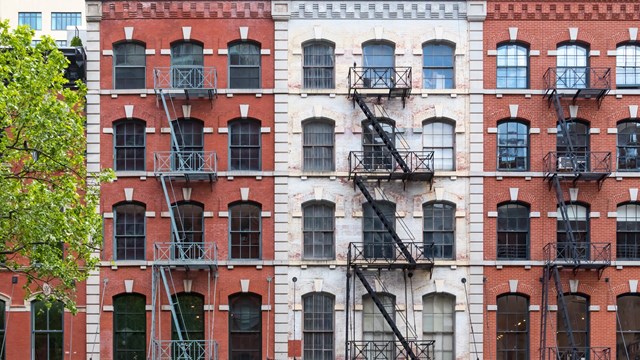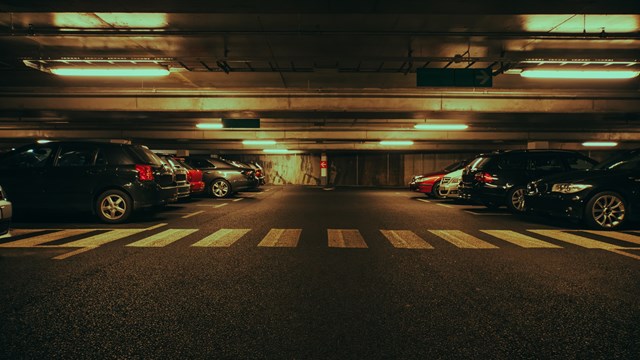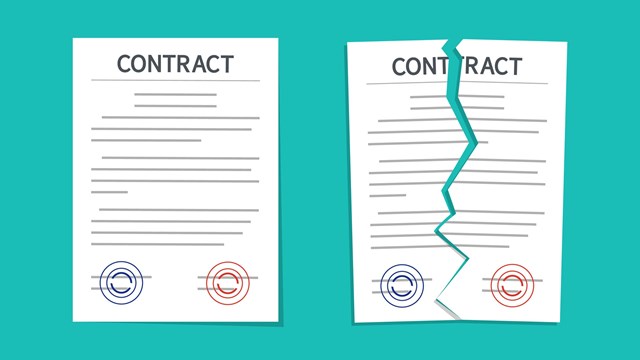As presidential candidates on the national scale rally around the idea of "it's time for a change," so too is the New York City Department of Buildings (DOB), rolling out its first major set of changes to the city's building code in 40 years. The new Construction Codes will ensure that, among other things, qualified technicians perform building inspections.
The current New York City building codes have not gone through a major revision since 1968, and have been pieced together over the years resulting in a code that is "long, cumbersome, and difficult to interpret," according to the DOB website www.nyc.gov/buildings. The revisions have taken over four years and involved "over 400 stakeholders representing architects, engineers, labor, real estate, government, accessibility advocates and others [who] volunteered hundreds of thousands of hours in a consensus-based process to develop the new codes," says Carly Sullivan, a DOB spokesperson.
According to the DOB website, "The Buildings Department intends to mandate, as of July 1, 2008, that all special inspections must be conducted by a Special Inspection Agency. These agencies must be registered with the department as qualified to conduct specified inspections and employ special inspectors."
The 1968 Building Code allowed professional engineers and licensed architects to conduct required inspections during the construction process. These inspections were called controlled inspections and ensured that work was safe and being constructed according to approved plans and specifications. Under the new New York City Construction Codes, controlled inspections have evolved into special inspections, which enhance controlled inspections by clarifying the qualifications and standards regarding proper inspections. The new codes mandate that special inspections be conducted by employees of Special Inspection Agencies, which must be registered with the department as qualified to conduct specified inspections."
Later this year, according to the DOB, the Buildings Department will delineate the requirements for these special inspection agencies, and, for each special inspection, they will define the qualifications required for the inspector; the process and procedure for the inspection; and the standards that must be met.
The new Construction Codes were modeled after the International Building Code (IBC) and "modified to meet the unique needs of New York City's dense urban environment," according to a DOB press release. Mayor Michael R. Bloomberg enacted the codes this past July, and they will go into effect this summer, July 1, 2008. The new codes, as a whole, will not be mandated officially until July 1, 2009, giving professionals the option to use either the old New York City Building Code or the new New York City Construction Codes for the first year. Once the codes are mandated, however, accreditation will require that "registered agencies operate under a quality management system documented in a manual" in addition to requiring that the agency "be assessed in the field to confirm it is competent to perform specific inspections or types of inspections."
Although some professionals might initially be annoyed with new changes and requirements to the building codes that will force them to do some things differently, Wayne Bellet of Manhattan-based Bellet Construction sees the changes as positive for the industry. "[These changes] are long overdue," exclaims Bellet. [Companies] are doing major construction over major New York City streets and intersections. How can you let them go untrained and unlicensed and ill-prepared? I like the idea that we're now holding everyone responsible."
Howard Zimmerman, of Howard L. Zimmerman Architects, PC, in Manhattan, shares a similar opinion with Bellet, saying, "we all hate change, because we are very comfortable with what we do, but I think the change is for the better. When you think about how building technology and how much construction has changed over 40 years, or even in the last 15 years, the Building Code is due for a change."
Change for the Better
A large part of the reason for the changes to the old building code is safety. According to Bellet, in 2006, there were 22 construction-related fatalities, and in 2007, the number of fatalities rose to 45, more than doubling in the course of a single year. "How much more work were we doing to cause that number to skyrocket?" Bellet asks before responding, "not that much more." He suggests that part of the reason for the rise in fatalities and the overall safety risks involved in the construction industry is that there is not enough regulation on new contractors and construction workers rushing in to work without having proper training and experience. "We're becoming accustomed to construction accidents and that is inexcusable," Bellet says, underscoring the importance of safety in the revamped codes.
New Safety Features for Buildings
In addition to the emphasis on safety in the new New York City Construction Codes related to the training and accreditation of technicians and professionals, there are also a slew of new safety features required of the buildings themselves. Sprinklers will be required in new residential buildings with three or more units; smoke alarms will be required inside each bedroom, within fifteen feet of each bedroom, and at every floor in multilevel units. High-rise buildings over 125 feet will require one-way voice communication systems in apartments and stair enclosures, in addition to, emergency generators and wider staircases. There are also additional safety concerns regarding the structural integrity of buildings, including wind load, failure of key structural elements, and vehicular impact, to name a few. The new codes apply primarily to new construction, however, administrative, enforcement, and construction safety provisions will apply to all construction projects, not just new buildings, as of July 1, 2008.
From the perspective of a board member or manager, the new codes seem to be a large improvement, increasing safety and ensuring that technicians are qualified.
However, as soon as new changes come into play, the bottom line is still cost. Part of the revamping of the new codes was a cost assessment of four prototype buildings, which included a commercial high-rise, a residential high-rise, a residential low-rise, and a school, in which they analyzed what might have "potential cost/savings consequences on construction." As expected, the increased safety requirements were responsible for some rise in cost, but they also identified ways to save money via improvements in the new codes. By working closely with professionals in the field, the Buildings Department sought to make the overhaul as comprehensive, effective, and for lack of a better word, painless as possible for all involved.
Professionals, like Bellet and Zimmerman, who both do a large amount of work with façade inspection and exterior restoration, namely Local Law 11, do not expect the changes in the codes to result in a considerable increase in cost on their end, which should translate into the same for board members and managers.
"It is a nuisance fee that is escalating exponentially, but I don't pass it on. I just view it as something that should have been all the while and I average it out over the last 90 years [Bellet Construction has] been in business. We've gotten away with not paying a premium, and now that we have to pay somewhat of a premium, I do not feel that it is something that should be passed on to the landowner. It's an expense that I run to run my business. I have general overhead. These expenses won't necessarily change my overhead," says Bellet.
The changes in the building code are "not going to increase any costs for us, in respect to Local Law 11," which deals with exterior restoration, says Zimmerman. Some professionals in the industry expressed concern about new permitting and the costs of that permitting. Zimmerman though feels in response that, "We permit everything now, and it's really going to be a similar amount of work. I don't see any change."
There is always at least a small amount of fear when something changes or something old is replaced, but the new Construction Codes are intended to simplify a complex and outdated code. A lot of things have changed since 1968, especially in terms of construction knowledge and technology, and it only makes sense that the Construction Codes should reflect these changes. In addition, they are expected to increase the safety of everyone involved in the industry, including residents, and civilians on the streets below work sites. Who said all change was bad? Maybe it is about time.
For more information on the new Construction Codes and upcoming training sessions, visit the Buildings Department website www.nyc.gov/buildings and click the link for the "Model Code Program." n
Brendan Flaherty is an associate editor with The Cooperator.
As presidential candidates on the national scale rally around the idea of "it's time for a change," so too is the New York City Department of Buildings (DOB), rolling out its first major set of changes to the city's building code in 40 years. The new Construction Codes will ensure that, among other things, qualified technicians perform building inspections.
The current New York City building codes have not gone through a major revision since 1968, and have been pieced together over the years resulting in a code that is "long, cumbersome, and difficult to interpret," according to the DOB website www.nyc.gov/buildings. The revisions have taken over four years and involved "over 400 stakeholders representing architects, engineers, labor, real estate, government, accessibility advocates and others [who] volunteered hundreds of thousands of hours in a consensus-based process to develop the new codes," says Carly Sullivan, a DOB spokesperson.
According to the DOB website, "The Buildings Department intends to mandate, as of July 1, 2008, that all special inspections must be conducted by a Special Inspection Agency. These agencies must be registered with the department as qualified to conduct specified inspections and employ special inspectors."
The 1968 Building Code allowed professional engineers and licensed architects to conduct required inspections during the construction process. These inspections were called controlled inspections and ensured that work was safe and being constructed according to approved plans and specifications. Under the new New York City Construction Codes, controlled inspections have evolved into special inspections, which enhance controlled inspections by clarifying the qualifications and standards regarding proper inspections. The new codes mandate that special inspections be conducted by employees of Special Inspection Agencies, which must be registered with the department as qualified to conduct specified inspections."
Later this year, according to the DOB, the Buildings Department will delineate the requirements for these special inspection agencies, and, for each special inspection, they will define the qualifications required for the inspector; the process and procedure for the inspection; and the standards that must be met.
The new Construction Codes were modeled after the International Building Code (IBC) and "modified to meet the unique needs of New York City's dense urban environment," according to a DOB press release. Mayor Michael R. Bloomberg enacted the codes this past July, and they will go into effect this summer, July 1, 2008. The new codes, as a whole, will not be mandated officially until July 1, 2009, giving professionals the option to use either the old New York City Building Code or the new New York City Construction Codes for the first year. Once the codes are mandated, however, accreditation will require that "registered agencies operate under a quality management system documented in a manual" in addition to requiring that the agency "be assessed in the field to confirm it is competent to perform specific inspections or types of inspections."
Although some professionals might initially be annoyed with new changes and requirements to the building codes that will force them to do some things differently, Wayne Bellet of Manhattan-based Bellet Construction sees the changes as positive for the industry. "[These changes] are long overdue," exclaims Bellet. [Companies] are doing major construction over major New York City streets and intersections. How can you let them go untrained and unlicensed and ill-prepared? I like the idea that we're now holding everyone responsible."
Howard Zimmerman, of Howard L. Zimmerman Architects, PC, in Manhattan, shares a similar opinion with Bellet, saying, "we all hate change, because we are very comfortable with what we do, but I think the change is for the better. When you think about how building technology and how much construction has changed over 40 years, or even in the last 15 years, the Building Code is due for a change."
Change for the Better
A large part of the reason for the changes to the old building code is safety. According to Bellet, in 2006, there were 22 construction-related fatalities, and in 2007, the number of fatalities rose to 45, more than doubling in the course of a single year. "How much more work were we doing to cause that number to skyrocket?" Bellet asks before responding, "not that much more." He suggests that part of the reason for the rise in fatalities and the overall safety risks involved in the construction industry is that there is not enough regulation on new contractors and construction workers rushing in to work without having proper training and experience. "We're becoming accustomed to construction accidents and that is inexcusable," Bellet says, underscoring the importance of safety in the revamped codes.
New Safety Features for Buildings
In addition to the emphasis on safety in the new New York City Construction Codes related to the training and accreditation of technicians and professionals, there are also a slew of new safety features required of the buildings themselves. Sprinklers will be required in new residential buildings with three or more units; smoke alarms will be required inside each bedroom, within fifteen feet of each bedroom, and at every floor in multilevel units. High-rise buildings over 125 feet will require one-way voice communication systems in apartments and stair enclosures, in addition to, emergency generators and wider staircases. There are also additional safety concerns regarding the structural integrity of buildings, including wind load, failure of key structural elements, and vehicular impact, to name a few. The new codes apply primarily to new construction, however, administrative, enforcement, and construction safety provisions will apply to all construction projects, not just new buildings, as of July 1, 2008.
From the perspective of a board member or manager, the new codes seem to be a large improvement, increasing safety and ensuring that technicians are qualified.
However, as soon as new changes come into play, the bottom line is still cost. Part of the revamping of the new codes was a cost assessment of four prototype buildings, which included a commercial high-rise, a residential high-rise, a residential low-rise, and a school, in which they analyzed what might have "potential cost/savings consequences on construction." As expected, the increased safety requirements were responsible for some rise in cost, but they also identified ways to save money via improvements in the new codes. By working closely with professionals in the field, the Buildings Department sought to make the overhaul as comprehensive, effective, and for lack of a better word, painless as possible for all involved.
Professionals, like Bellet and Zimmerman, who both do a large amount of work with façade inspection and exterior restoration, namely Local Law 11, do not expect the changes in the codes to result in a considerable increase in cost on their end, which should translate into the same for board members and managers.
"It is a nuisance fee that is escalating exponentially, but I don't pass it on. I just view it as something that should have been all the while and I average it out over the last 90 years [Bellet Construction has] been in business. We've gotten away with not paying a premium, and now that we have to pay somewhat of a premium, I do not feel that it is something that should be passed on to the landowner. It's an expense that I run to run my business. I have general overhead. These expenses won't necessarily change my overhead," says Bellet.
The changes in the building code are "not going to increase any costs for us, in respect to Local Law 11," which deals with exterior restoration, says Zimmerman. Some professionals in the industry expressed concern about new permitting and the costs of that permitting. Zimmerman though feels in response that, "We permit everything now, and it's really going to be a similar amount of work. I don't see any change."
There is always at least a small amount of fear when something changes or something old is replaced, but the new Construction Codes are intended to simplify a complex and outdated code. A lot of things have changed since 1968, especially in terms of construction knowledge and technology, and it only makes sense that the Construction Codes should reflect these changes. In addition, they are expected to increase the safety of everyone involved in the industry, including residents, and civilians on the streets below work sites. Who said all change was bad? Maybe it is about time.
For more information on the new Construction Codes and upcoming training sessions, visit the Buildings Department website www.nyc.gov/buildings and click the link for the "Model Code Program."
Brendan Flaherty is an associate editor with The Cooperator.







Leave a Comment